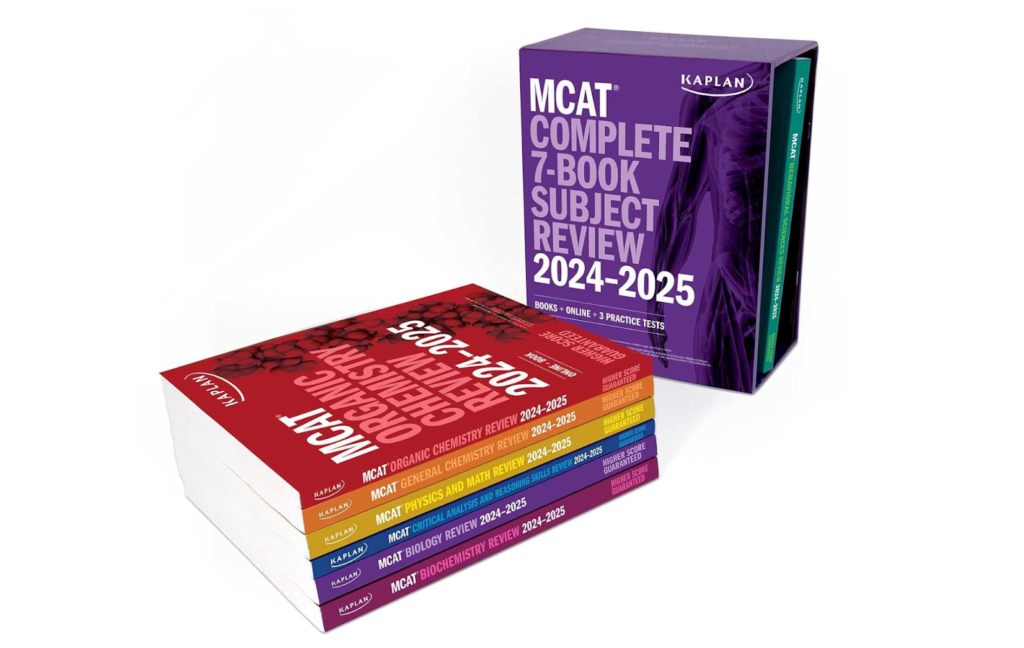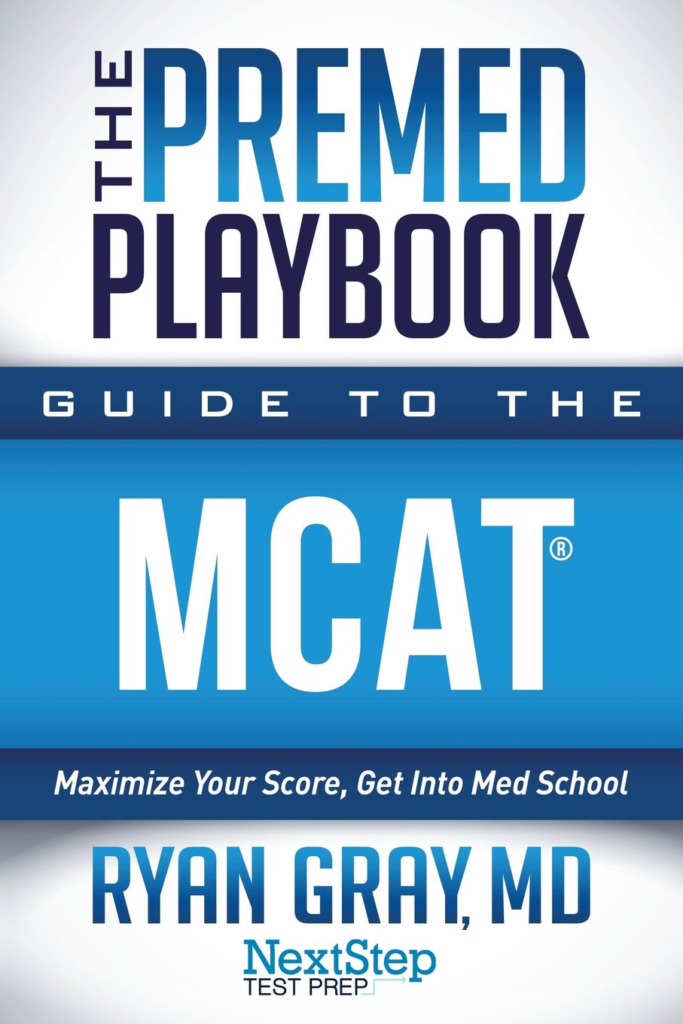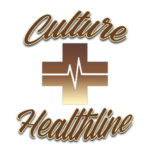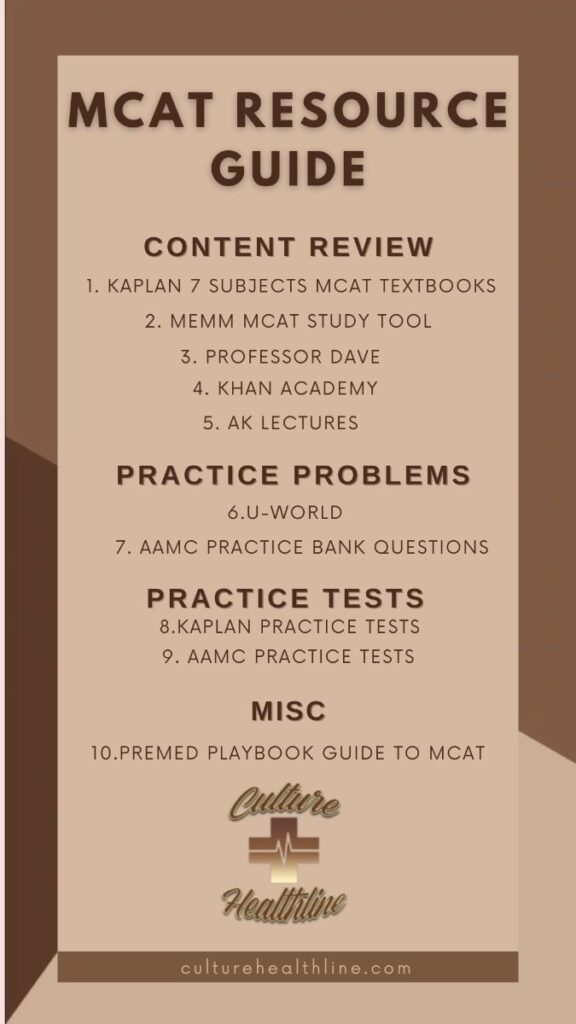
Introduction
Deciding what resources to use to study for the MCAT can be challenging, especially with so many different options out there. Everyone is telling you to use this resource or that resource, or that this one specific thing is what got them a 520 on the MCAT. The truth is, is that everyone is different and what works for one person may not work for another. Some students prefer more structured learning so they opt to take a class with an instructor or have a private tutor. Some students prefer to pull different resources together to self-study. The choice is ultimately up to you.
I like so many other minority students did not have the funds to get into a class or have a private tutor. I took a different route and pulled as many resources together for as cheap as possible to pass the test.
This is not an article to persuade you to use exactly what I did but rather to show you the things that worked for me and also give you a basic guideline of what you need to rise above the test.
Content Review
When you first start studying for the MCAT you want to start with content review. Content review is essentially reviewing the content you learned in your undergraduate classes that are necessary for the MCAT. These classes include Organic Chemistry, Biochemistry, Cell Biology, and Psychology just to name a few. In general, people say that most of your content review should be done while you are in these classes and that this phase should be the shortest of your study period. I was reviewing content up to a week before the test and feel like it made all the difference. There are many different ways to go about the content review phase of studying.
1. Books
One of my favorite ways to review content was with a set of MCAT textbooks. They are all pretty much the same because the test is standardized but my personal favorite was the Kaplan 7 subjects book.
They are pretty pricey new but second-hand works just as fine. Thankfully I was gifted mine through a program so that fee was avoided but when I finished using them I passed them down. Once you are done with yours this would be a great way to help someone who was in your position at one time.

2. Flashcards
My second favorite resource for content review was a company called Memm (Memm – MCAT studying made better | Memm). This was a newer company when I started using them but they proved their worth very fast and I began using them daily. The company takes all the material needed for the MCAT and makes them into flashcards for you to review daily much like a software called Anki which we will have a whole separate article about.
These flashcards allow you to take information that you learned from the textbooks and put it into question format to test your knowledge consistently. They use techniques called spaced repetition and active recall to ensure that you are keeping up with the knowledge that you have learned.
They also had “quick sheets” with information on there to refresh your knowledge as you were going through the flashcards, which I found very helpful. Although this was an amazing product it was a little pricey coming in around ~$125-$350 depending on how long you want the subscription. This is a lot especially if you do not have a lot to spend but they do offer a fee assistance program for people who need it which can give you up to 50% off the plan that you select.
They also offer a free trial using their Biology flashcards for a week, so you can get a feel for how you like it. I did the free trial and decided it was worth the money, so I applied for the fee assistance and got in which allowed me to have the three-month plan for around $180. They also offer a one-month plan for $125 and a six-month plan for $339 originally. You may also extend your plan for an additional charge if needed.
This resource was truly my holy grail! Reviewing these cards kept my content fresh during the practice questions phase and as mentioned earlier I reviewed flashcards up to a week before my test. I specifically went through all the flashcards again from the beginning about a week out from my test and finished going through them about 3-4 days before my test and I believe this helped me increase my score by at least 3 points.
In the end, I understand if you do not want to drop money on flashcards so my other suggestion would be to use a program I mentioned earlier called Anki. Anki is a flashcard software that uses the same strategies as Memm but it’s free on computer. The only thing is that Anki is difficult to use for first-time users and the learning curve might not be worth it while studying for the MCAT.
If you do however decide to use it they have many free flashcard decks online made by other pre-medical students that also have all the material for the MCAT. Check out our very basic Anki guide to learn more about it once it is out.
3. Honorable mentions
Three honorable mentions that helped me during the content phase were Professor Dave, Khan Academy, and AK lectures on YouTube. If I did not understand a concept their videos helped break it down further than the textbook did and also since it was in a video format I visualized the concept much more.
Practice Problems
Practice problems, practice problems, practice problems. That is all you probably hear people say when it pertains to studying for the MCAT, and yes they are important, but only once you have most of the content learned. After you finish the bulk part of your content review you should move into the practice problems/questions phase. This phase is important if not more important than the content review because it can expose a lot.
First, it can expose what people call “content gaps” which are parts of your content that you have forgotten. Like the resistance equation for physics or Boyle’s Law for chemistry. Taking practice questions allows you to apply the information you have learned and see how much of it you remember.
If you miss a practice question this will tell you that you need to go back and review that topic again. Practice questions come in handy when you are literally learning how to take the test, because yes the MCAT is about content but it is also about learning how to take the test and how the questions are worded. By doing multiple passes of practice questions you will soon get used to how the questions are worded which can clue you into the right answer.
My favorite resources that I used for practice problems were U-World, Jack Westin, and the AAMC practice bank questions.
1. U-World
So starting with U-World…this beauty helps so many students at all levels in medicine. U-world is a website that has different practice questions for each section of the MCAT and allows you to make your own mini-test by pulling together questions on topics that you selected. This feature is great because it allows you to practice subjects that you might feel shaky on by honing in on them specifically while taking it lighter on subjects you feel better about. When you are done with the questions it tells you what you got right or wrong and also a fabulous explanation on it. Seriously they’re great.
Since they track your score it also has a feature that takes up stats on you so you can see your average over time among many other things. In all its glory U-World is pricey for sure but if there was one thing I would say to spend the most amount of money on it would be U-World. As with Memm they offer a 7-day free trial for you to test the waters, after that it ranges between $320-$420 depending on how long you want the subscription for.
A lot of medical schools provide U-World for students to study for Step 1 and 2 as well as some shelf exams so getting familiar with it now might be to your advantage.
2. Jack Westin
I used this resource for one thing and one thing only….and that was to do CARS practice questions. I, like a lot of other students, did not really vibe with the U-World CARS questions so we opted for Jack Westin (Jack Westin | The Home for MCAT Preparation and Courses) which has amazing daily passages ranging in difficulty.
Not only were these questions great but they also had good explanations for why the answer was what it was, and not to mention that they were free! I am sure they have quality practice questions for other sections but I did not use them.
3. AAMC Practice Banks
As we know the AAMC is the official company that gives out the MCAT so if they are giving out practice questions I am taking them. These questions are old test questions that they sell to students for extra practice (MCAT® Prep (aamc.org)). These question packs can range in price depending on if you want just single-subject questions such as biology or all subjects.
They also have multiple question packs so it is hard to run out of questions. I went through a majority of all the question packs and practice problems and I was able to do so because I was enrolled in the Fee assistance program (FAP) through the AAMC. Check out our post talking about FAP once it is out.
This allowed me to have access to all the question packs, practice problems, and practice tests which truly came in handy during this phase of studying. If you feel like you may need this, please try to join this program as it can save a lot of money in the long run and offers a lot more benefits than free practice questions. Overall if you can, try to get one question pack so you can see how the writers of the test write questions.
4. Practice Test
This section is very similar to the last section because essentially practice tests are just multiple practice questions put together to simulate the real test. So when taking a practice test you want to act as though you are taking the real test.
This means waking up earlier to start at a similar time to when you are taking the test, eating a similar breakfast, and imitating testing conditions as much as possible. You want to get to the point where you are sitting down and focused for the whole 8 hours when taking your practice test. This takes stamina and practice but you will get there by continually taking practice tests.
As mentioned earlier I was able to get into the AAMC FAP so I received four free practice tests which I spaced out throughout my studies. I also had a couple of free Kaplan tests which came with my book set that I used in combination with the AAMC test. Between these two things, I was able to track my projected score and see where I stood. These tests are useful for more than just getting acclimated to the test. They also offer you the ability to review the whole thing and see what you got right or wrong which is just as important as taking the test.
Miscellaneous
I wanted to add this section here because the resource I am about to share gave me an overview of the test and the confidence to start studying. The Premed Playbooks were the biggest lifesaver for me because they acted as my Premed counselor that I never had but always wanted.
Specifically the Premed Playbook Guide to the MCAT. This book gave me a quick breakdown of everything I needed to know to conquer this test. It might seem like a drag to read an extra book on top of all the other reading you have to do to take the actual test but I think if you want the ins and outs of the MCAT it might be useful to pick up.

Conclusion
Once again I want to reiterate that everyone’s study plan is different, these were just my favorites that allowed me to be successful in taking the test and getting into medical school. All you truly need is some sort of content review, whatever that looks like for you, and some sort of practice questions and tests. Keeping those two concepts in mind will allow you to choose the best resources that work for you and your budget. You got this!


